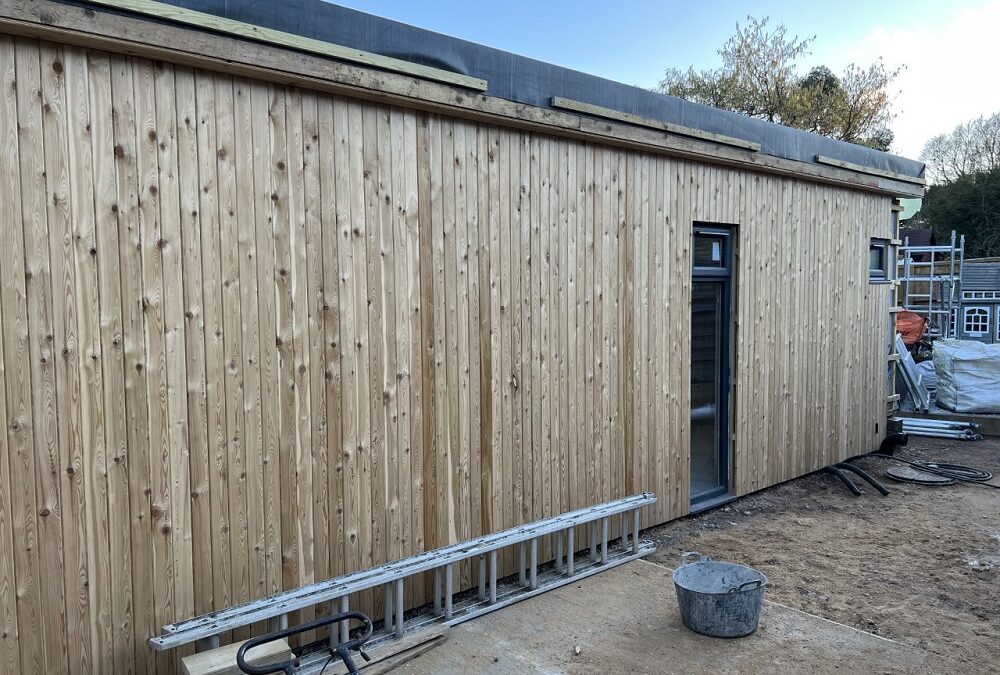Larch, a sort of durable wood known for its beauty, makes some stunning exterior cladding for homes. It’s a resinous wood that is naturally resistant to insects. It acts as an insect repellent, hindering them from creating holes in the wood. Other than offering to clad homes, larch wood is utilized for building boats, yachts, and interior paneling.
Which Is Better: British or Siberian Larch Cladding
Both possess unique characteristics that make them popular choices for cladding residential exteriors. British larch cladding is durable and eco-friendly, providing an aesthetic appeal to any structure. Siberian larch timber is useful both in cladding and fencing applications. It’s softwood that gives a robust finish to the exterior. It comes in a straw color, gradually changing to a silvery shade over time.
Larch Cladding: Characteristics
Cladding is Easy and Light with Larch
Larch is a light wood that is easy to work with while installing. Its strength-to-weight ratio and decay resistance make it the most popular option for cladding exteriors. Despite being lighter than other woods, it offers ample protection.
· Maximum Strength And Durability
Both these qualities make an ideal match for the protection of the building exterior. Speaking of hardness, larch is around 50% harder than other timber. In comparison to other cladding materials like ceramic and metal, larch is a sustainable and natural option.
· Larch Cladding Comes With Colour Options.
The UK and Siberian larch come in yellowish-brown shades and reddish hues, respectively. The shades can range from light to strong gold. Since larch is available in lighter colors, it offers the ideal option for flooring, furniture, and cladding. However, one needs to maintain this color with regular cleaning; otherwise, it’s bound to lose its vibrancy.
· Rot And Insect Resistant
Owing to its high resistance against rot and insects, larch is a low-maintenance wood for cladding. The resin substance present in the wood acts as an insect repellent, thus shielding the wood and making it more durable and strong. During the larch cladding process, it’s vital to include boards that have consistency in thickness. A good amount of maintenance coupled with proper installation can help larch cladding give a hassle-free performance for ages.
· Weathering Is Slow
It takes years for larch to weather down. It’s a natural procedure for food to lose its color and start greying, and larch is no exception. Although, unlike other woods, larch takes time to weather down due to its consistency. Other than greying, the different impacts of weathering include moisture and fungal attacks, causing the larch cladding to rot and split.
Conclusion
Larch timber has more advantages compared to its handful of limitations. Larch is easier to work with than other timber varieties. It has the ease of milling and processing. Due to its consistent texture, the finish is as smooth as silk, providing sophistication to the end product.
Related posts
Categories
Recent Posts
Tags
Calendar
| M | T | W | T | F | S | S |
|---|---|---|---|---|---|---|
| 1 | ||||||
| 2 | 3 | 4 | 5 | 6 | 7 | 8 |
| 9 | 10 | 11 | 12 | 13 | 14 | 15 |
| 16 | 17 | 18 | 19 | 20 | 21 | 22 |
| 23 | 24 | 25 | 26 | 27 | 28 | 29 |
| 30 | ||||||

